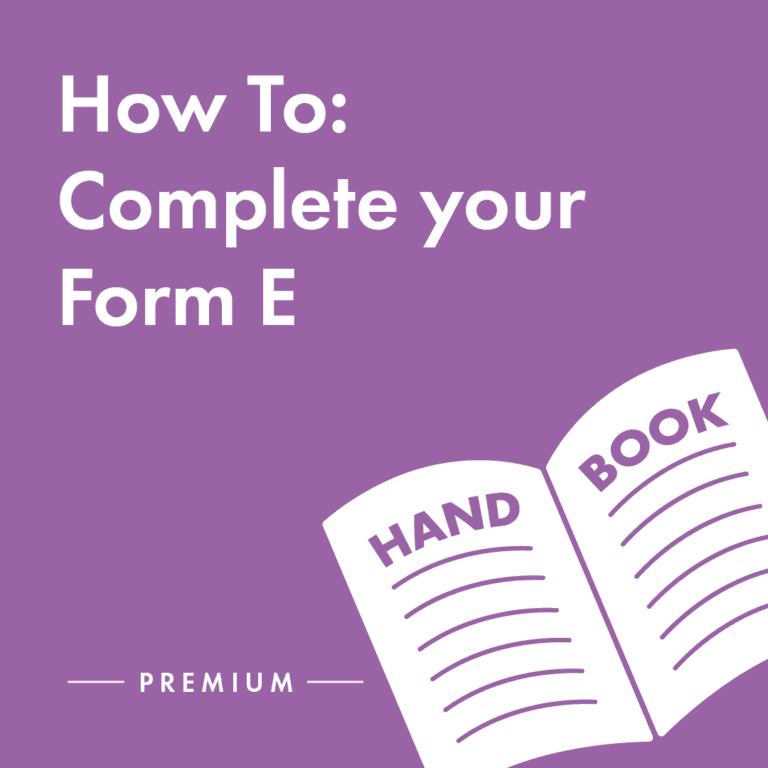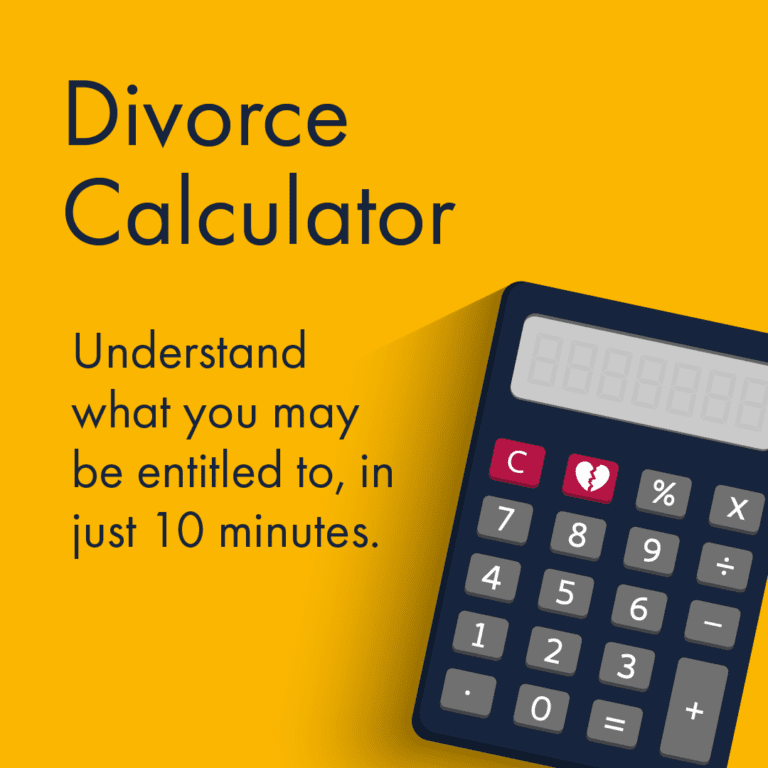 Download guide
Download guide
Is Form E compulsory in divorce?
The Form E is only compulsory if you need to go to court to reach a financial settlement in your divorce. However, many couples choose to complete the Form E as it gives a clear picture of the assets and liabilities of both people and helps them to make more informed decisions on how to separate their finances.
We offer an award winning service

Basic Form E divorce guidance notes
The Form E is an important part of the process to reach a financial settlement in your divorce, so it is vital you get the details correct.
It is a very technical and detailed form. Accessing legal advice from the start will help you complete the form correctly and ensure you have all the relevant documents needed. This will also help you avoid costly or time-consuming mistakes further down the line.

How to fill in the Form E
Below, you’ll find details of some of the key information requested in the Form E. For a more detailed step-by-step guide on how to fill in a Form E – download our free guide.
1. Property valuation
The Form E asks for detailed information about any property you, or your partner own including:
- Current valuations, or any obtained in the last six months.
- Up-to-date mortgage redemption statement for all applicable properties.
2. Bank details
All bank accounts, building society accounts, and National Savings accounts held by either party over the previous 12 months, including joint accounts, must be fully detailed in Form E.
3. Investments
This includes PEPs, ISAs, TESSAs, National Savings, bonds, stocks, unit trusts, investment trusts, gilts, and other quoted securities.
4. Insurance
All life assurance (endowment) policies must be disclosed even if they have no surrender value and pay out on death only. If they do have a surrender value, that should be included.
5. Assets
Details of all monies owed to a party must be included, as well as all cash sums held more than £500. Similarly, all personal belongings individually worth more than £500 must be included too.
 Download the guide
Download the guide
6. Debts
All liabilities including credit/store cards, bank loans and hire purchase agreementsshould be disclosed, with details of who the debt is owed to and the amount.
7. Capital gains
If capital gains tax might be payable, then it is good practice and expected that a calculation should be included in Form E, as clearly this affects the net value of the assets.
read more8. Business assets
There are detailed sections of Form E for any business assets or directorships. These need to be completed with supporting documentation
9. Pensions
Full details of all pensions need to be provided in Form E, together with an up-to-date cash equivalent (CE). The CE is an important document that the court requires for the initial valuation of all pensions held. As they can take quite a long time to obtain from the pension provider, it is good to ask for these at a very early stage to avoid any delay in the proceedings.
 Use the calculator
Use the calculator
10. Income
Parties to divorce must also fully declare their income from all sources, whether from employment, self-employment, a partnership, or investments – i.e. dividends, interest, rental income, state benefits, pensions, or any other source.
11. Income needs
Each party will also be required in their Form E to set out a schedule of their monthly or annual income needs, both for themselves and for any children, as well as their ‘capital needs’ – i.e. the funds they may require to purchase a property or replace a motor vehicle or undertake essential repairs on their home.
12. Changes in circumstances
Other sections towards the end of Form E require details of any significant changes in assets or income over the preceding 12 months or in the following 12 months, any nuptial agreements or inheritance prospects.
Statement of truth
At the end of Form E, each party must sign a ‘statement of truth’ that confirms that the information they have given is full, frank, clear, and accurate disclosure of their financial and other relevant circumstances. It includes a warning that anyone making a false statement on Form E may face contempt of court charges.
read moreNext steps
Once you have finished, you need to arrange exchange of Form Es with your ex-spouse, either directly or through your solicitor. The forms are usually exchanged simultaneously. If you are in court proceedings, you will also need to file your Form E with the court.

Contact Stowe Family Law about divorce financial disclosure Form E
It is advisable to seek independent legal advice from a family law specialist if you complete a Form E.
If the factors listed are all taken into account when completing a Form E, you are far more likely to avoid unnecessary delays, costs, and questions later on; a divorce lawyer can help you do precisely that.
Our local divorce lawyers have helped many people with Form E and divorce settlements.
Latest advice
Newsletter Sign Up
Sign up for advice on divorce and relationships from our lawyers, divorce coaches and relationship experts.
Privacy Policy

















